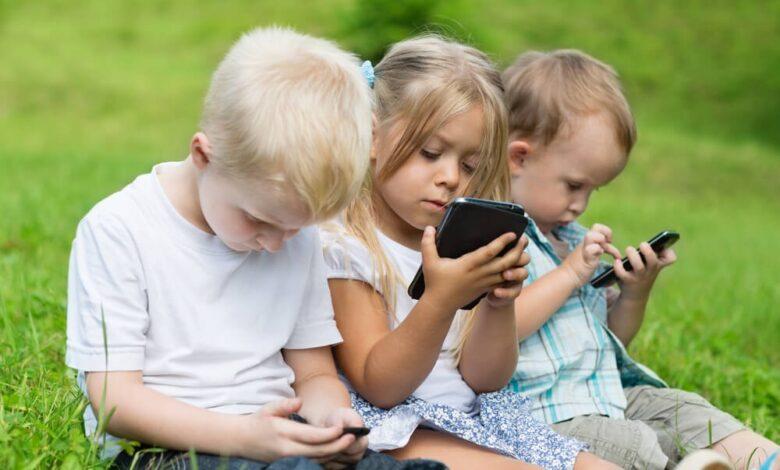Preschoolers online: why Ukraine has taken up the digital hygiene of the youngest children

They can’t read yet, but they already know how to swipe. They don’t go to school yet, but they know how to turn on YouTube, find a cartoon and turn off the sound on their phone when adults are around. They are three, four, five years old — and they already live in a world where the screen has become a full-fledged part of childhood. Especially now, when a full-scale war has changed everything: usual schedules, safe routes, contact with peers, the rhythm of family life. Gadgets have become a lifeline for many children – convenient, bright, fast. But is it safe?
Discussion of the project Concepts of digital hygiene of preschool children
April 1 Ministry of Education and Science carried out for public discussion the project of the concept of digital hygiene of preschool children. This is not another campaign to restrict cartoons and not an attempt to “take away phones”. It’s the state’s first attempt to take a serious look at what a digital childhood looks like in wartime — and how to make it less traumatic.
The bottom line is that digital hygiene used to be talked about mostly in the context of schoolchildren and teenagers. But the war changed everything. Now it is children aged three to six who often spend hours in front of screens, simply because the family has no other options. If the child and his family are in evacuation, if the parents are constantly at work or volunteering, if the kindergarten works remotely or does not work at all – the tablet becomes a universal solution. Games, videos, learning, communication with grandma – all in one device. But with this comes new risks: an excited psyche, fatigue, sleep disturbances, aggression or isolation. Sometimes – complete dependence.
The concept proposed by the Ministry of Education and Culture is an attempt to formulate a framework. Do not forbid, do not intimidate, but explain: here is what is normal, and here is what should be changed. In the center is not technology, but the child. Her well-being, her development, her ability to navigate in a world where the digital is intertwined with the real. And most importantly, this concept applies not only to kindergartens. It is addressed to everyone: educators, private centers, development studios, and — above all — parents. Because no document works if the child falls asleep at home every day with a tablet in his hands, because otherwise “there is no other way.”
The issue of digital hygiene for preschoolers is not about how much time a child watches cartoons. It’s about how she feels when the screen turns off. About whether she is able to play real games, invent a plot, communicate with others. And about whether there is an adult nearby who sees, hears, reacts. In a situation where millions of Ukrainian children have been living in a state of anxiety, moving, being separated from their parents or friends for more than two years, the ability to be in a digital environment without loss becomes a basic skill. And the sooner you start forming it, the better the chances are that the child will remain in his development, and not get lost between TikTok, Telegram and YouTube.
Discussion of the concept continues. And this is a rare moment when the state asks parents not just to read the instructions, but to look at their childhood through the eyes of their children. Because these children have a different childhood. They were born in smartphones and grow up under sirens. And if we want to help them not break, we should start not with a new toy, but with an honest look at how they live – online and offline.
What parents should know
For parents, the digital hygiene of preschoolers begins not with rules, but with daily decisions. From how exactly the child interacts with the gadget – and under what circumstances. If a tablet or phone in the family is used only as a way to “calm” or “distract” when there is a lack of time and energy, it quickly turns into an addiction. Especially in children who grow up in a disturbing, unstable environment.
The youngest users of digital devices cannot regulate their own experience. That is why the task of an adult is not only to limit, but also to accompany. A child does not need prohibitions – he needs presence. She needs to know that she can show her father or mother what she is watching. That mom is interested not only in “was something scary?”, but also in “what did you like?”. That time with the phone is not “stay away from me”, but “I am near and I am in the know”.
The “time management” advice sounds good on paper. But in reality, it is better if half an hour with the tablet is half an hour of joint viewing, discussion or game, and not an hour of uncontrollable “blinking” in the corner of the room. Because it is joint participation that gives the child a sense of security and gradually forms the ability to disconnect, complete, switch.
And also: children imitate the behavior of adults. If mom and dad are constantly on the phone, the child will not believe that “gadgets are not the main thing.” Digital hygiene is not child control, but attention to children. If the child sees that the evening is not a time for mindless scrolling, but a time for communication, play or just being present, he will remember it better than any rule from the manual.





